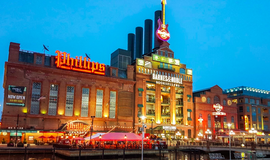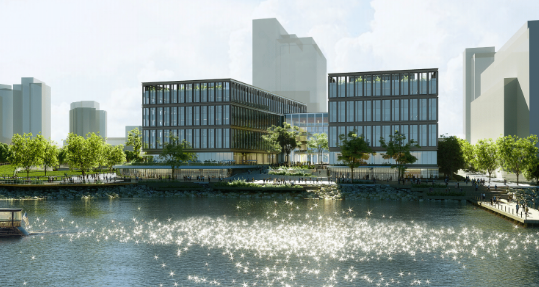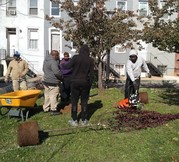The Planning Academy is a free six-week course with a focus on building community leadership around urban planning, zoning, and development in Baltimore.
Below are responses to some questions we've received about the program this month:
What does the curriculum cover?
The course is unique in its laser focus on the functions of zoning and the process of development, and its emphasis on small group learning and community building across neighborhoods.
How many people are accepted?
We have space for 30 participants per session, and usually we have far more applicants. We cap the course at this level because we emphasize community building and relationships - we want everyone to participate actively and get to know each other. However, we do post materials from the course publicly on our website for anyone interested in the content to review.
When will the course be held? What is the time commitment?
The workshops will be held on weekday evenings after 6 PM. If fully virtual (TBD), the course will be held Tuesdays/Thursdays, 6:30-8 PM. We ask that all participants commit to ALL sessions.
How does the application work?
Your application will be assessed based on your responses to four general short essay questions. We are looking for people who are curious, involved and care about Baltimore! The applications are reviewed by a team of staff and alumni of the program.
We prioritize participants from communities that have faced historic disinvestment in Baltimore.
Apply on www.baltimoreplanningacademy.com look for the button on the top right of the page!
Next CHAP hearing: January 12, 2021
For older cities like Baltimore that were established almost 300 years ago, historic preservation becomes increasingly important to planning. In Baltimore, the historic fabric of the city reinforces many planning principles that make urban living desirable: walkability, diversity of uses, visual interest, and places conducive to positive social activities. In addition, many of Baltimore's architectural details – marble steps, cornice brackets, slate roofs, cast-iron window hoods -- make neighborhoods visually unique and irreplaceable.
Like good nutrition, CHAP guidelines and design review help buildings stay healthy, live longer, and shine with vibrancy. More than that, they provide cultural, aesthetic, and even economic value to Baltimore City.
Earlier this year, CHAP released a study by PlaceEconomics that analyzed the economic impact of the City's Historic Tax Credit. This report also looked at the value of Baltimore City's historic districts where CHAP conducts exterior design review. The study found that the average residential property value in these neighborhood was double the value of properties outside these districts. If you haven't seen the study yet, you can see it here.
If you are interested in historic preservation, you can also tune in to CHAP hearings each month. All hearings are on the second Tuesday of the month, and are available via livestream. The agendas can be found via this link.

During the City Council review of the Zoning Code Rewrite in 2016, the Department of Planning committed to an annual review the Code, so that it is responsive to change over time.
We are continually working on this task with a corrective bill in 2017 and a rewrite of signage title in 2018.
In 2020, we prepared an additional bill that was a collection of updates regarding usability and clarity of the code.
That bill (City Council Bill #20-0601) did not complete the Council hearing process before the Council completed their four year term.
Therefore, moving forward we have a number of zoning related updates in progress for 2021:
- Corrections and clarification to Title 17 Signage
- Redoing the changes considered in City Council Bill #20-0601
- Changes to Parking requirements
We are also evaluating aspects of the code from an equity lens perspective. This process will assess how the code impacts historically disinvested neighborhoods, as well as overall neighborhood stability and growth.
There may be other amendments proposed in 2021 to the zoning code as a result of this work. You can track updates on this website.
If you have any questions please contact laurie.feinberg@baltimorecity.gov
|
At the December 10 meeting of the Urban Design & Architecture Review Panel, the panelists reviewed two projects in Harbor Point, including Parcel 3, located next to Point Park. This project includes a public space component with a view of the waterfront. Interested community members can review project details by visiting the agenda webpage via this link. |
|
 |
 |
|
Through a grant from AARP and in partnership with Bon Secours Community Works, 30 trees were planted at Racheal Wilson Memorial Park, 145 S. Calverton this month.
The AARP grant also provides funding for Bon Secours Community’s Clean and Green Team (a workforce program for Southwest Baltimore) to water and maintain the trees during 2021.
|
Baltimore Makes the Climate Cities A-List
Baltimore has been recognized by CDP as one of 88 cities across the globe that continue to lead on environmental action despite the pressures of tackling Covid-19.
CDP is a global non-profit that drives companies, cities and governments to reduce their greenhouse gas emissions, safeguard water resources and protect forests.
Baltimore has been recognized for its actions to develop robust climate change strategies, track and act to limit and reduce emissions, assess and mitigate climate risks, and transparently report this information in its 2020 disclosure to CDP.
The full "A" List of cities is published here.
|